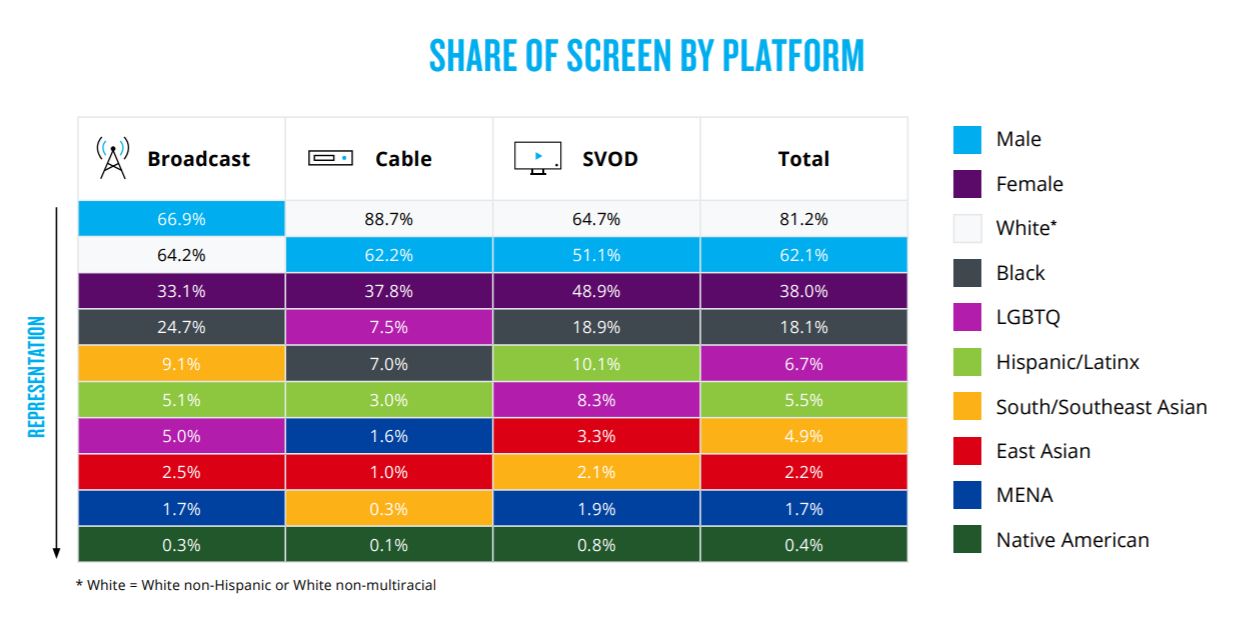Nielsen Diversity Report: Room for Improvement in Reflecting Current Society
Nielsen report details who is being featured on screen and how they are being represented

NEW YORK—As discussion on race and representation in America’s culture have risen to a new level in recent years, a new report from Nielsen shows that while progress has been made, there is room for improvement in terms of representation of more racial/ethnic groups, as well as how they are represented on screen.
Nielsen’s “Being Seen on Screen: Diverse Representation and Inclusion on TV” report acknowledges that in 2019 of the 300 most viewed TV programs 92% of all programs had some presence of diversity (women, people of color or LGBTQ) in its recurring cast. However, digging deeper into the details, Nielsen explains that “presence is not the same as representation.”
According to Nielsen’s findings, while 52% of the estimated U.S. population is female, women’s share of the screen (representation among the top 10 recurring cast members) is at 38%. People of color make up an estimated 40% of the U.S. population, but have just 26.7% share of the screen. The only group that exceeds its actual presence compared to estimated population is LGBTQ (4.5% of estimated population), but they still have just 6.7% share of the screen; and only 2.3% of the top 300 programs have non-binary representation.
Nielsen breaks it down further between not only more specific ethnic/racial designations, but also based on the platform they are viewed on, be it broadcast, cable or streaming. Streaming offers the most diversity, having the lowest share of screen percentage for white characters (64.7%) and a near even split between male and female characters (51.1% male, 48.9% female). On average streaming also has the most inclusive representation of people of color.

Broadcast offers the highest share of screen for Black and South/Southeast Asian characters, but is lowest among LGBTQ. Cable, inversely, has strong LGBQT numbers but is the lowest in representation of all peoples of color.
Other findings regarding screen share revealed that Hispanic/Latinx women are consistently one of the least represented group among all platforms. In addition, Native American’s share of screen (0.4%) is less than one quarter of their presence in the estimated U.S. population across all TV.
Nielsen makes the point that the amount of time that viewers typically spend watching TV content across platforms (six hours per day) can serve as an external force for identity formation and the associations we make of others. “Therefore, the presence of diverse people on screen and the context in which they are presented can be among the most influential factors in developing our personal attitudes and beliefs,” Nielsen states in its report.
Get the TV Tech Newsletter
The professional video industry's #1 source for news, trends and product and tech information. Sign up below.
One example that Nielsen gives is the representation of Black males and females in news/weather. Black males have a 15.26% share of the screen for news and weather, however, despite making up half of the black population, Black females have a less than 1% share of the screen.
“The first step to creating an inclusive society is for people to feel seen and be seen,” the Nielsen report concludes. “The stories told, the characters portrayed and the experiences shared on screen help people feel empowered and learn about those who are different.”
The full Nielsen report is available for download online.
